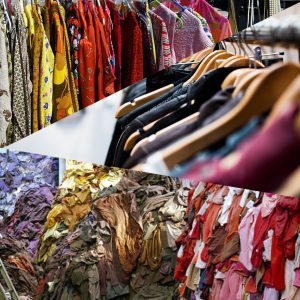018: Top Tip Thursday, Fast Fashion with Mariska Nell

In this episode, we will be taking a look at fast fashion and why it is important for us to look into sustainable fashion options. I will also be sharing with you some of my tips to help you create a sustainable wardrobe and how you can get more out of your clothing.
Fast fashion is a term that is used in the fashion industry to described inexpensive designs, that move quickly to keep up with the latest fashion trends. It is not uncommon for some of these brands to release new products weekly to keep up with the trends instead of introducing new lines on a seasonal basis.
Episode Highlights
[01:11] Fast fashion became more popular in the 90’s. To produce more clothing at a faster pace and lower rate, these manufacturers will try to keep the production cost as low as possible. Some of the ways they can do this are by using low-quality materials that will only last a few washes and pay workers low wages.
[01:34] Often these workers, working conditions is not socially sustainable, and a lot of these working environments are unsafe to work in. One of the most deadly garment factory incidents happened in 2013 in Dhaka, Bangladesh, when the Rana Plaza collapsed. 1,138 garment workers died and 2,500 more were injured during the collapse of the eight-storey building.
[02:05] It has been more than five years since the collapse of Rana Plaza, however, Bangladesh is still known as one of the countries where their garment workers earn the lowest wages in the world, with a minimum wage of less than $100 per month.
[02:23] In the last few years, more campaigns were started to encourage people to ask questions and to know what they are wearing and if it is sustainable economically, environmentally and socially.
[02:38] Carry Somers and Orsola De Castro found Fashion Revolution, a non-profit organisation committed to enacting genuine change in the fashion industry. It all started with a hashtag #WhoMadeMyClothes?
[03:11] A few tips that I use to make my wardrobe more sustainable.
[03:16] Buy Second-hand.
[03:38] Invest in quality ethical clothing when you purchase new.
[04:25] Repair rather than replace.
[04:47] Purchase only what you need.
[05:05] If you look at the wardrobe of the founder of the zero waste lifestyle movement, Bea Johnson, you would only find 15 items. From these 15 items, she can create 50 different looks. Her entire wardrobe fits in a carry-on and therefore everytime she travels she can pack her entire wardrobe and does not have to spend a lot of time thinking what she needs to pack when going on a trip.
[05:36] I have recently implemented a policy in my wardrobe that anything that I have not worn in the last 12 months needs to go. It is either donated or sold to the thrift store and whenever I want to purchase a new item I need to replace one of the older items.
[06:10] My final tip for today is to do what you can and feel comfortable to start with. Living a more sustainable life is a journey and not a race.
Key Take Away
“If you look at the wardrobe of the founder of the zero waste lifestyle movement, Bea Johnson, you would only find 15 items. From these 15 items, she can create 50 different looks.”
How often do we stand in front of our very cluttered wardrobe and think, wow I do not have anything that I would be able to wear today? Yes, we have a wardrobe full of clothing, maybe half of the wardrobe does not fit anymore or is only used during a specific season or are there because of sentimental reasons. By removing items that you no longer wear would clear up some space in the cupboard that would save you time every morning as there would be fewer clothes to go through when deciding what to wear. If Bea can create 50 outfits from only 15 items then I am sure we would be able to let go of many more items in our wardrobes that takes up a lot of space as well as our time.

